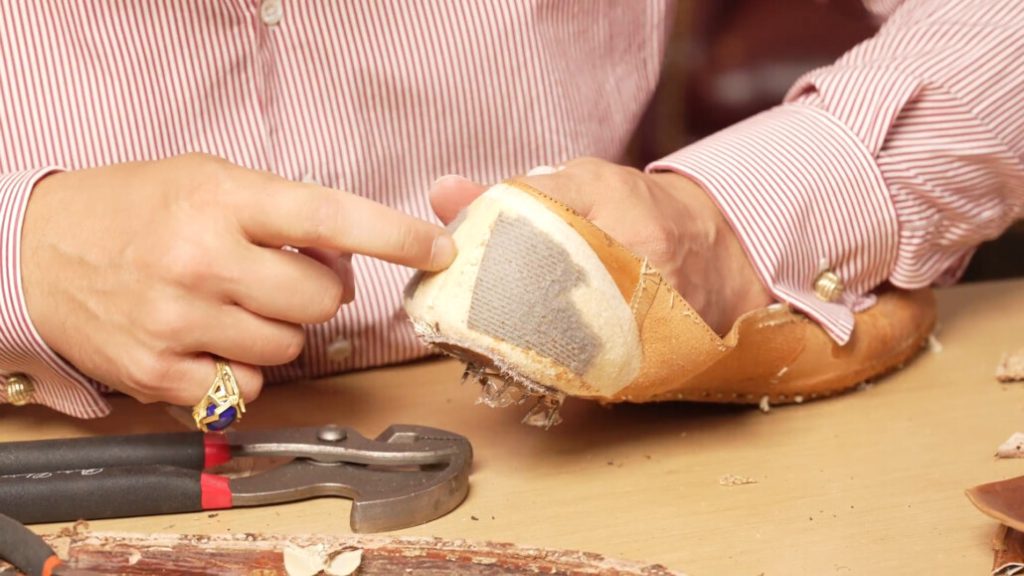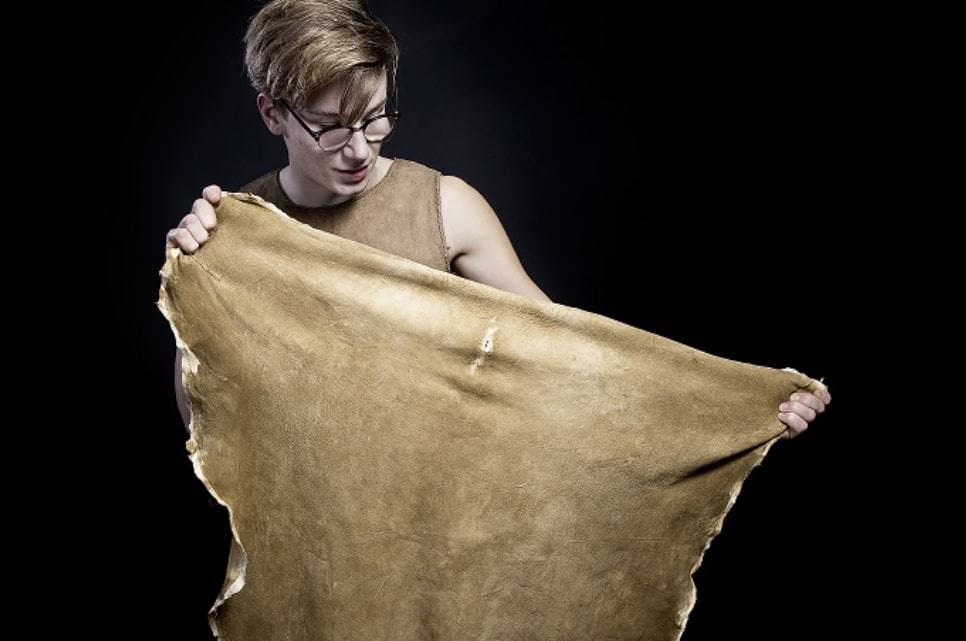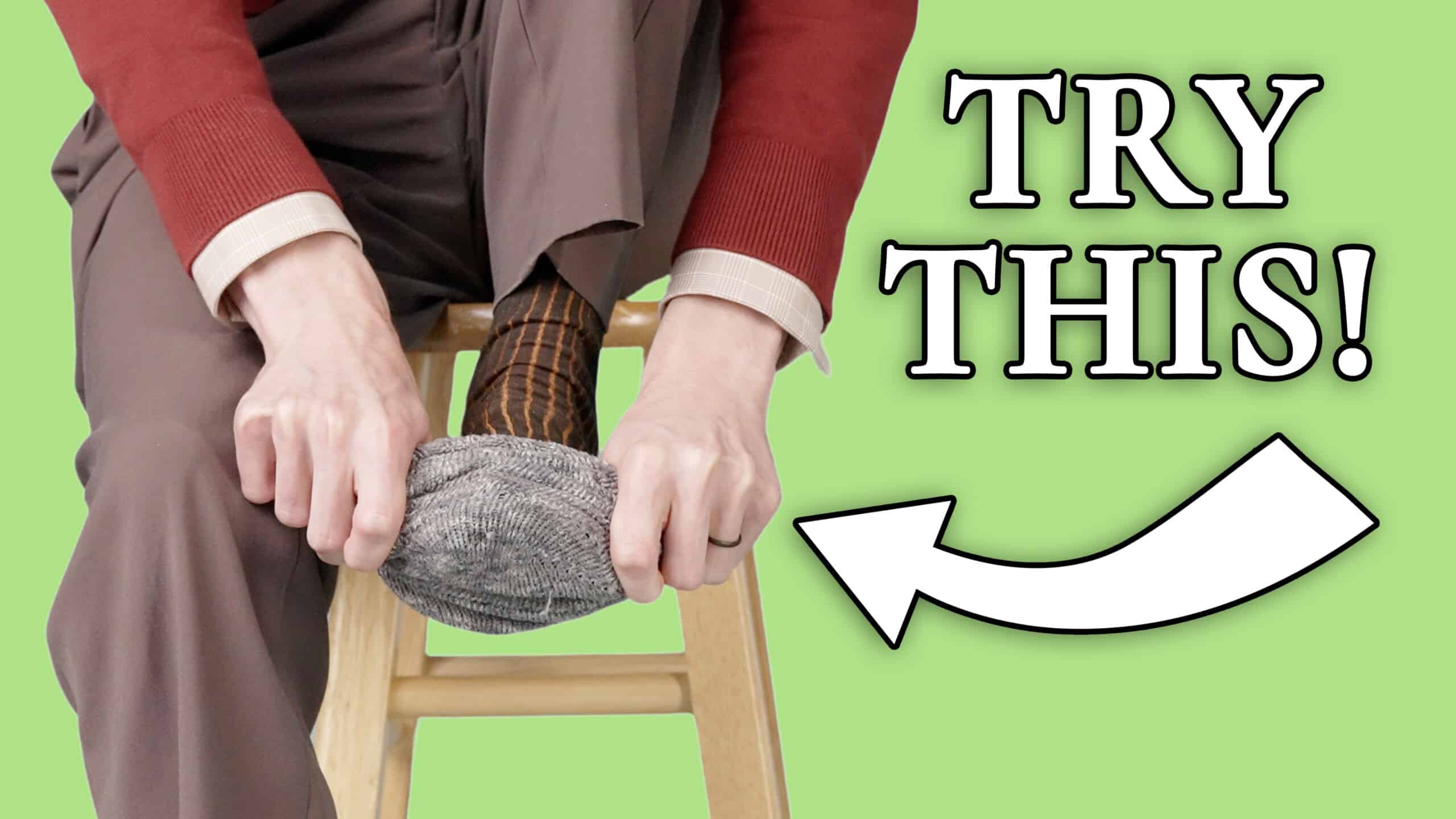Finding the perfect pair of shoes can sometimes feel like a magical moment. The kind that instantly lifts your spirits and makes you feel like you’re walking on clouds. But sometimes, that blissful feeling is short-lived when discomfort sets in. We’ve all been there, experiencing that painful pinch or tightness that turns our favorite shoes into sources of agony. But fear not, dear shoe lovers, because we’ve got you covered. In this article, we’re going to share with you eight techniques for stretching shoes to alleviate discomfort. We’ll walk you through the importance of understanding the type of leather used in your shoes, suggest using a quality conditioner to keep the leather hydrated, and even give you tips on wearing your shoes at night to gradually stretch them. So, get ready to step into a world of comfort as we guide you through these handy techniques.
Understanding the Type of Leather
Leather shoes are a popular choice due to their durability and timeless style. However, not all leather shoes are created equal. Understanding the type of leather used in your shoes is essential when it comes to stretching them. Different types of leather respond differently to stretching techniques, so it’s important to know what you’re working with.
Common types of leather used in shoes include full-grain leather, top-grain leather, and suede. Full-grain leather is the highest quality and most durable, while top-grain leather is slightly lower in quality but still reliable. Suede, on the other hand, is a more delicate type of leather with a soft and fuzzy texture.
When stretching shoes made of full-grain or top-grain leather, you can expect them to stretch and mold to your feet more readily. Suede, however, requires more caution and gentler stretching methods to avoid damaging the delicate material. Knowing the type of leather you’re dealing with will help you choose the most appropriate stretching techniques for your shoes.
Using a Quality Conditioner
Conditioning your leather shoes regularly is not only important for their overall maintenance but also for stretching them. Conditioning helps keep the leather hydrated and supple, allowing it to stretch more easily. It also helps prevent the leather from cracking or becoming brittle during the stretching process.
When it comes to choosing a conditioner for your leather shoes, opt for a high-quality product specifically designed for leather footwear. Look for conditioners that contain natural oils or beeswax, as these ingredients nourish the leather and provide long-lasting protection. Avoid using petroleum-based products, as they can clog the pores of the leather and hinder its ability to stretch.
To properly condition your shoes before stretching them, start by cleaning them with a soft brush or cloth to remove any dirt or debris. Then, apply a small amount of conditioner to a clean cloth and gently rub it into the leather in circular motions. Allow the conditioner to absorb into the leather for a few minutes before wiping off any excess with a clean cloth. Conditioning your shoes regularly will help maintain their flexibility and make stretching them easier and more successful.

Wearing Shoes at Night
If you’re looking for a gradual and effortless way to stretch your shoes, wearing them at night can be a game-changer. This technique takes advantage of the natural expansion of your feet during sleep to stretch the shoes without applying force or discomfort to your feet.
The benefits of wearing shoes at night to stretch them extend beyond simply achieving a more comfortable fit. By wearing your shoes while you sleep, you allow the leather to warm up and soften, making it more pliable and receptive to stretching. This method is particularly effective for stretching leather shoes made of full-grain or top-grain leather.
To try this technique, simply put on a pair of thick socks and then slip your shoes on. Make sure the socks are thick enough to provide a gentle stretching effect without causing discomfort. Sleep with the shoes on overnight, and by morning, you’ll notice that they have subtly stretched to accommodate the shape of your feet. However, it’s crucial to take some precautions when using this method.
First, make sure your shoes have a comfortable fit to begin with. Wearing overly tight shoes at night can cause unnecessary discomfort and may not yield the desired stretching results. Additionally, ensure that you’re using this method on shoes made of durable leather that can withstand prolonged wear.
Using Thick Socks or Multiple Pairs
If wearing your shoes at night is not a viable option for you, using thick socks or multiple pairs of socks can also aid in stretching your shoes. This technique works by filling out the shoes and creating gentle pressure on the leather, encouraging it to stretch gradually.
Thick socks can provide extra padding and promote the stretching process by adding bulk to your feet. Opt for socks made of materials like wool or cotton, as they allow your feet to breathe while still providing a comfortable stretching effect. Avoid using socks that are too thin or made of synthetic materials, as they may not provide sufficient pressure for effective stretching.
If you’re looking for even more stretching power, you can try using multiple pairs of socks. Layering socks inside your shoes increases the thickness and creates additional pressure points, ensuring an efficient stretching process. Start with one pair of thick socks as a base, and then add additional pairs to achieve the desired stretching effect.
Using this technique allows you to customize the stretching process according to your preferences and comfort level. It’s important to note, however, that this method may not be suitable for all shoe types, especially those with intricate or delicate designs.

Adding Material to Shoe Trees
Shoe trees are a useful tool for maintaining the shape and structure of your shoes. However, they can also be utilized to stretch shoes and provide a more customized fit. Adding materials to your shoe trees can enhance their stretching capabilities and help you achieve the desired fit.
When using shoe trees for stretching, it’s essential to choose the right materials to insert into them. Some common options include balled-up socks, crumpled newspaper, or even plastic bags filled with water. These materials will expand and create pressure against the inner walls of the shoes, gently stretching the leather over time.
To properly use shoe trees for stretching, start by inserting the chosen material into the toe area of the shoe tree. The material should be large enough to create a noticeable bulge, but not so dense or rigid that it causes discomfort or damage to the shoe. Insert the shoe tree with the material inside the shoe and leave it in for a few days or as needed, periodically checking the fit to determine if further stretching is required.
It’s important to be mindful of the limitations of this technique. While it is effective for minor stretching and adjustments, it may not provide significant results for shoes that require substantial stretching. In those cases, other stretching methods may be more suitable.
Using a Specialized Shoe Stretcher
For those seeking a more specialized tool for stretching shoes, a shoe stretcher can be an excellent investment. These devices are specifically designed to stretch shoes and provide a customized fit by applying controlled pressure to specific areas.
There are various types of shoe stretchers available, including two-way stretchers, which expand the width and length of the shoe simultaneously, and one-way stretchers, which focus on either width or length. Depending on your needs, you can choose the type that suits your shoes and desired stretching goals.
To effectively use a shoe stretcher, start by adjusting it to the desired width or length and insert it into the shoe. Apply gentle pressure by turning the handle or tightening the mechanisms, being cautious not to overstretch the shoe. Leave the stretcher in place for a period of time, typically overnight or as recommended by the manufacturer. Repeat the process as needed until you achieve the desired fit.
Before using a shoe stretcher, it’s crucial to thoroughly read and follow the instructions provided by the manufacturer. Each stretcher may have specific guidelines or limitations, and improper usage can potentially damage your shoes. Additionally, ensure that the shoe is made of a stretchable material and can withstand the stretching process without compromising its integrity.

Applying Heat to the Shoes
Heat can be a valuable ally when it comes to softening leather and making it more receptive to stretching. However, it’s essential to exercise caution when applying heat, as excessive heat can damage the leather and cause irreparable harm to your shoes.
One way to apply heat is by using a hairdryer. Start by wearing a pair of thick socks to protect your feet from potential discomfort or burns. Set the hairdryer to a moderate heat setting and direct the warm air onto the areas of the shoe that require stretching. Move the hairdryer continuously to prevent concentrated heat in one spot and avoid overheating the leather. While the leather is warm and more pliable, gently stretch the shoe by flexing or bending it. Repeat the process as needed until you achieve the desired fit.
Alternatively, you can use a warm towel or a hot water soak to soften the leather before stretching. Wet the towel with hot water, wring out the excess, and then place it inside the shoe. Allow the heat and moisture to penetrate the leather, making it more supple. Afterward, follow the same stretching techniques as described above.
Regardless of the method you choose, it’s important to remember that heat should be applied with caution and moderation. Excessive or prolonged exposure to heat can cause the leather to become warped, discolored, or even crack. Always test the heat levels on a small inconspicuous area of the shoe before proceeding to the entire shoe. If you’re unsure or uncomfortable with using heat, it’s best to explore alternative stretching methods.
Other Stretching Techniques
Aside from the methods mentioned above, there are a few other stretching techniques you can consider if you’re looking for alternative options. While these techniques may not be as commonly used, they can still yield results when used correctly.
One method involves using wet newspaper or socks to stretch the shoes. Wet the newspaper or socks thoroughly, stuff them inside the shoes, and allow them to dry completely. As the paper or socks dry, they will expand and exert gentle pressure on the leather, promoting stretching. It’s important to note that this technique is more suitable for shoes made of durable leather and may not be suitable for delicate or intricate designs.
Another unconventional method involves freezing your shoes. This technique works by filling a plastic bag with water, placing it inside the shoe, and then freezing the shoe overnight. As the water freezes and expands, it stretches the leather, allowing for a more comfortable fit. However, it’s crucial to exercise caution when using this method, as freezing can affect the structural integrity of certain shoe materials.
If you’re unsure about using any of these stretching techniques or prefer professional assistance, seeking help from a shoe repair or stretching professional is always an option. These professionals have the knowledge, experience, and tools necessary to stretch your shoes safely and effectively. They can assess the type of leather, the extent of stretching required, and recommend the most appropriate methods for your specific shoes.
In conclusion, stretchings shoes to alleviate discomfort is a common practice that can greatly increase the comfort and longevity of your footwear. By understanding the type of leather used in your shoes, using quality conditioners, wearing shoes at night, utilizing thick socks or multiple pairs, adding material to shoe trees, using specialized shoe stretchers, applying heat cautiously, and exploring other methods, you can achieve a customized fit that allows you to enjoy your shoes to the fullest. Experiment with different techniques and find the ones that work best for your shoes and personal preferences, ensuring both comfort and style in every step.

